Open Channel Sediment Transport Demonstrator
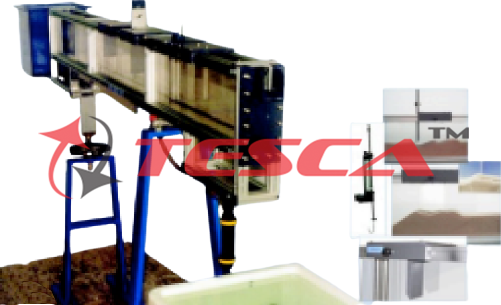
Order Code: 32103
Category: Fluid Mechanics Lab
Features: Flow in an inclinable flume with and without bed-load transport Subcritical and supercritical flow Visualization of flow with contrast medium Tesca Open Channel Sediment Transport Demonstrator uses sand as an example to demonstrate im...
SPECIFICATION
Features:
Flow in an inclinable flume with and without bed-load transport
Subcritical and supercritical flow
Visualization of flow with contrast medium
Tesca Open Channel Sediment Transport Demonstrator uses sand as an example to demonstrate important phenomena of bed-load transport in the area near the bottom. Open-channel flow without sediment transport is also possible. Discharge can be subcritical or supercritical.
The core element of the experimental flume with a closed water circuit is the inclining experimental section. The sidewalls of the experimental section are made of tempered glass, which allows excellent observation of the experiments. All components that come into contact with water are made of corrosion-resistant materials (stainless steel, glass-reinforced plastic). The inlet element is designed so that the flow enters the experimental section with very little turbulence and no sediment can flow back. The tank after the water outlet contains a sediment trap for coarse sand.
The inclination of the experimental flume can be finely adjusted to produce slope and to create a uniform flow at a constant discharge depth.
In addition to bed-load transport in open channels, some models can also be used to observe fluvial obstacle marks, namely scour formation and siltation at structures. A rounded-nosed pier or a sluice gate can be inserted into the experimental section.
The discharge is measured via a measuring weir in the water outlet and a level gauge. The level gauge is also used for profile measurement in the sediment and to determine the discharge depth at each point of the experimental section.
A contrast medium can be injected to visualize the flow conditions.
Specifications:
1. Investigation of open-channel flow with and without bed-load transport
2. Experimental flume, consisting of experimental section, inlet element, water outlet and closed water circuit
3. Smoothly adjustable inclination of the experimental section
4. Side walls of the experimental section are made of tempered glass for excellent observation of the experiments
5. All surfaces in contact with water are made of corrosion-resistant materials
6. Flow-optimized inlet element for low-turbulence entry to the experimental section; inlet element with sediment trap to prevent sediment flowing back
7. Closed water circuit with water tank with sediment trap for coarse sand, pump and manual flowrate adjustment
8. Sluice gate and bridge pier for experiments with and without sediment transport
9. Visualization of the flow using a contrast medium
10. Discharge measurement via measuring weir in the water drain
11. Level gauge for measuring the discharge depth and the height of the sediment surface
Technical Specifications:
Experimental section
Length: 1600mm
Flow cross-section WxH: 86x300mm Ÿ Inclination adjustment: -1…+3% Tank: 280L
Pump
Power consumption: 1,02kW
Max. flow rate: 22,5m3/h
Max. head: 13,7m
Sediment trap filter element: 49mesh
Experiments:
Recording a fan characteristic
In conjunction with the power meter
Determining the fan efficiency
In conjunction with corresponding accessories
Velocity distribution in the pipe
Velocity distribution behind a cylinder subject to transverse incident flow
Pressure distribution around a cylinder subject to transverse incident flow
Friction losses in pipes, pipe bends and pipe angles
Recording the cooling curve of a copper cylinder subject to incident flow
Determining the heat transfer coefficients from the cooling curve
Requirements:
1. Mains Input: 220 – 240V AC @ 50Hz

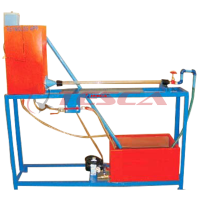
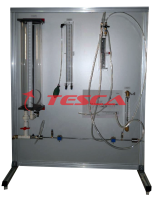
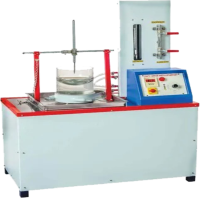
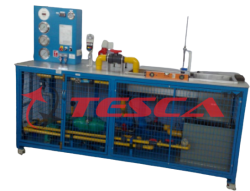
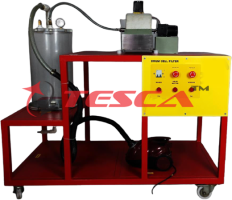
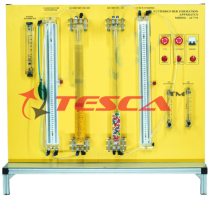
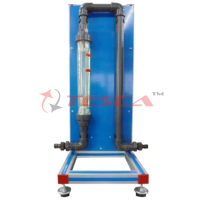
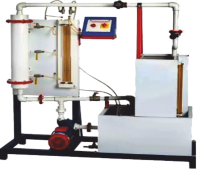
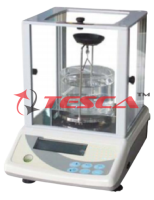

 91-9829132777
91-9829132777